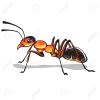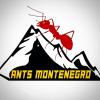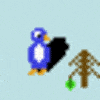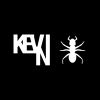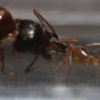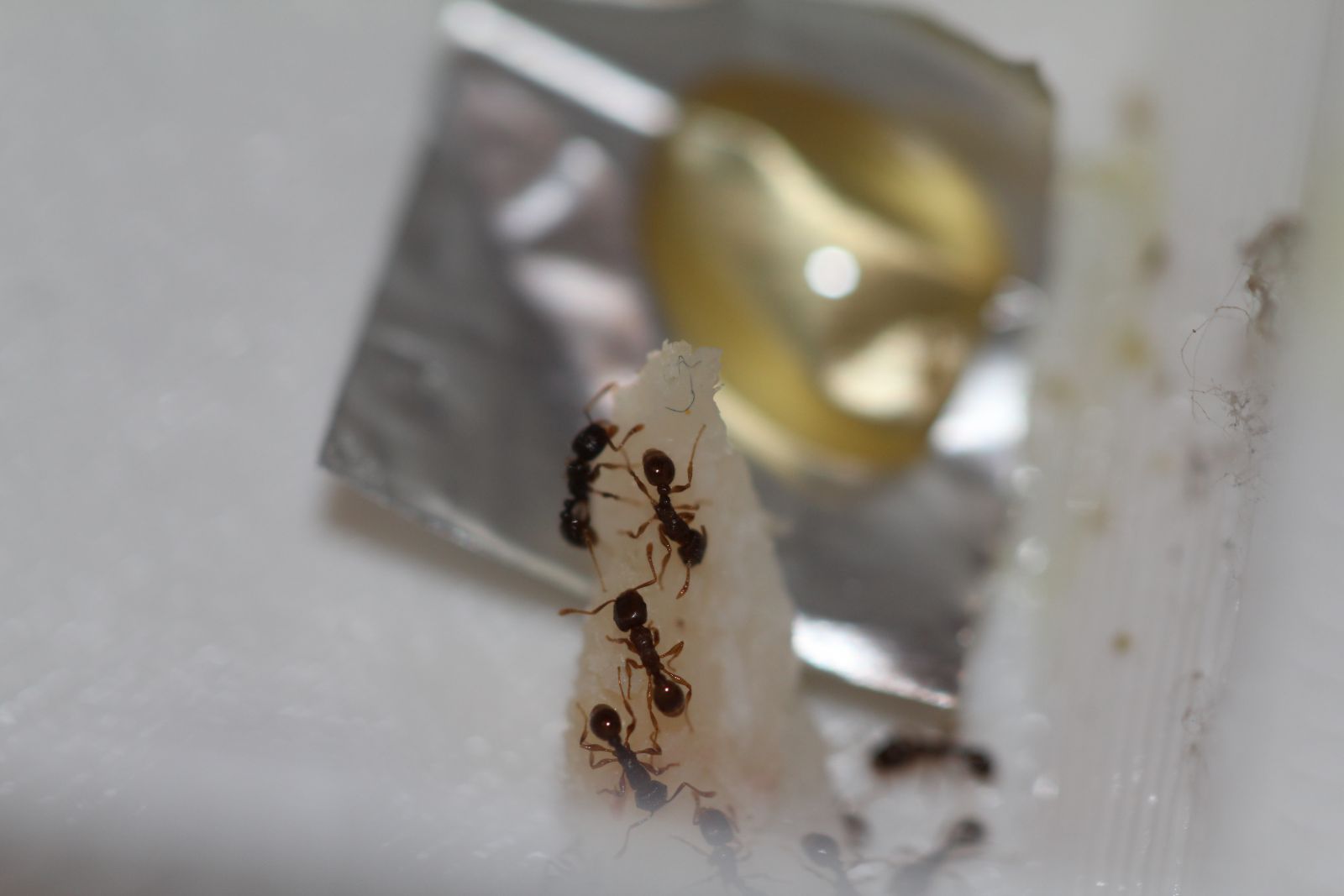I need help iding these ants. I bought them under the impression they were teramorium but I'm not convinced. They are lightning fast and the queen can't be more than 4mm and not much bigger than the workers.pictures to follow. 3 queens are getting along quite nicely as evident by the brood everywhere and the queens in close proximity to each other. these were caught in southern Maine. I'm not even sure they are poly.
Edited by Diesel, December 11 2017 - 3:14 PM.
Ant Species kept
Temnothorax Longispinosus.-Journal(discontinued)-(formerly)
Camponotus Noveboracensis (formerly)
Camponotus Nearticus-formerly
Tetramorium sp.-formerly
Camponotus Pennsylvanicus Queen & brood.-formerly
Tapinoma Sessile-Journal (3 queen colony)-formerly
Tapinoma Sessile #2 (2 queen colony)-formerly
Aphaenogaster Picea-Journal-active
Crematogaster sp.(Cerasi or Lineolata) Queen with 3 workers and brood-formerly
Crematogaster sp. #2 (Cerasi or Lineolata) Queen with brood-formerly
Formica sp. polygenus-active 300+ workers-active
Formica Subsericea-active 25+ workers-active
Myrmica Rubra 400+ workers 3 queens-active



